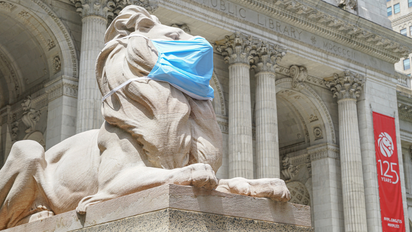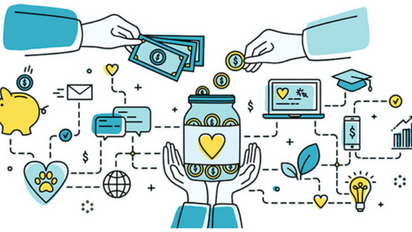The Latest
Donors acquired in 2020 are wired differently. Do you know how to keep them giving?
At the onset of the pandemic, many nonprofits worried about how they could continue to raise funds and keep donors involved while the rest of the world was shutting down and staying home. Organizations that depend heavily on donations from on-site visitors were especially vulnerable.
These types of nonprofits had to quickly shift gears to make up for the lack of in-person donations. One approach that organizations like the Basilica of the National Shrine of the Immaculate Conception took was to rework their typical fundraising language and make strong appeals, a move they considered risky in a pre-pandemic world. But the risk paid off, so much so that there was an increase in existing donors’ level of giving and significant influx of new donors.
The 2020 surge in donations was a huge relief, however, it created a unique problem: how do you retain donors acquired during a crisis?
To prevent donor attrition, here are four tips to create a robust donor retention strategy for donors acquired during the 2020 pandemic.
Adjust your typical communications plan for new donors
Since 2020 was such an atypical year for everyone, it’s essential to establish your organization as a part of your new donors’ world and not just a nonprofit that they made a one-time donation during a once-in-a-lifetime year. To do this, start by refreshing your acknowledgment and appeals language. And don’t revert to a softer ask in future appeals, as it may lead donors to think that your organization no longer needs their donations.
Instead, continue using the same tone and language that inspired your new donors to give during the pandemic throughout the early stages of your donor retention plan. While it’s important to be cognizant of current events as the world eases its way out of the pandemic, donors need to know that their gifts are still critical to your organization. So use a hard ask that’s reflective of the same tone your donors initially responded to when developing your fundraising language. This will help ensure that their donations continue to roll in.
As for the new donors that the Basilica of the National Shrine of the Immaculate Conception brought on board last year, 41% of them had already renewed their support to the organization before the end of July 2021.
Build a relationship with your new donors
Build upon that first donation and create a bond with your new donors by communicating with them often on their preferred channel and making them feel involved in your organization.
How? Your communications plan should first start with a personalized thank you as soon as possible upon receiving a donor’s gift. This should be followed by consistent appeals.
From there, facilitate a dialogue with your donors to learn more about them, engage with them, and get them involved in your organization. Ask questions such as why they donated, how they heard of your organization, and if they’d be interested in volunteering. This is also an excellent time to ask about their preferred communication channels—mail, email, social media, or phone—and invite them to follow your organization on all your platforms.
If your donors are concentrated in areas that have been susceptible to USPS postal delays, consider thanking them first with an automated thank you call or text message.
Offer a recurring gift option
In a world of automation, offering a recurring gift option is convenient for donors and will work wonders for your organization. Humans are habitual creatures, and we see this in nonprofit fundraising all the time: donors respond to the same appeals package year after year or give at specific times such as a birthday, holiday, or other special date. Thus, many donors are very open to automating their donations. Make it easier on your donors by giving them an option to sign up for recurring gifts.
Recurring gifts can also offer a huge benefit for your organization. According to Network for Good, the average recurring donor will give 42% more in one year than those who give one-time gifts. Think of it this way: if a donor signs up to give $50 a month, that adds up to $600 per year!
Highlight donor impact stories
Donors—especially new donors—want to feel confident that their money is being put to good use. Put their minds at ease and inspire additional gifts by sharing how donations make an impact on your organization.
One easy way to do so is to quantify support whenever possible (for example, $100 = 10 meals). This makes it easy for donors to know exactly what their gift is going towards and how they’re making a direct impact on your organization.
Additionally, share stories about how donors’ gifts are being used to achieve to showcase how donations make it possible for your organization to provide more and achieve your mission.
Looking for more information?
For more information or assistance with your donor retention strategy, contact us at info@thelukenscompany.com.





